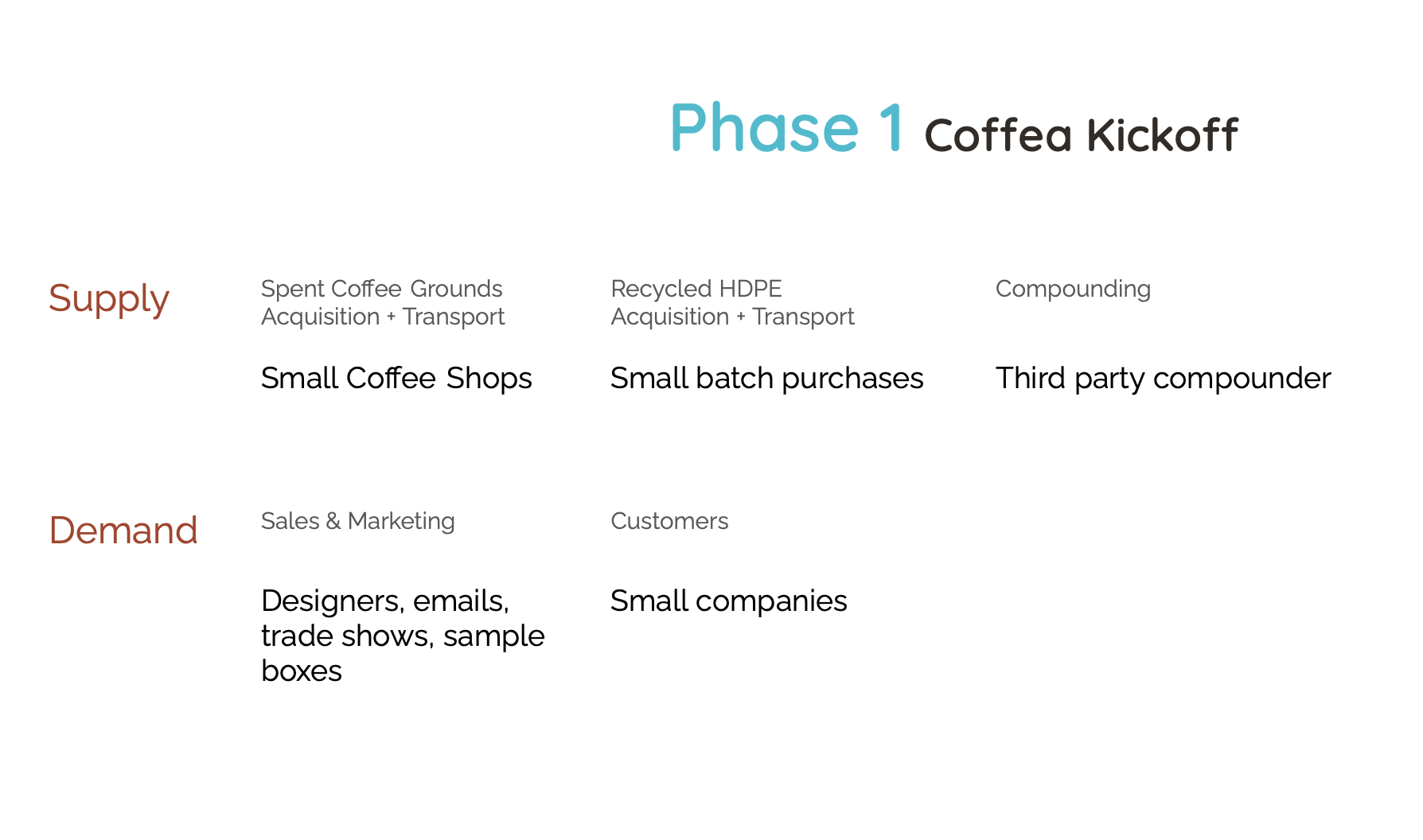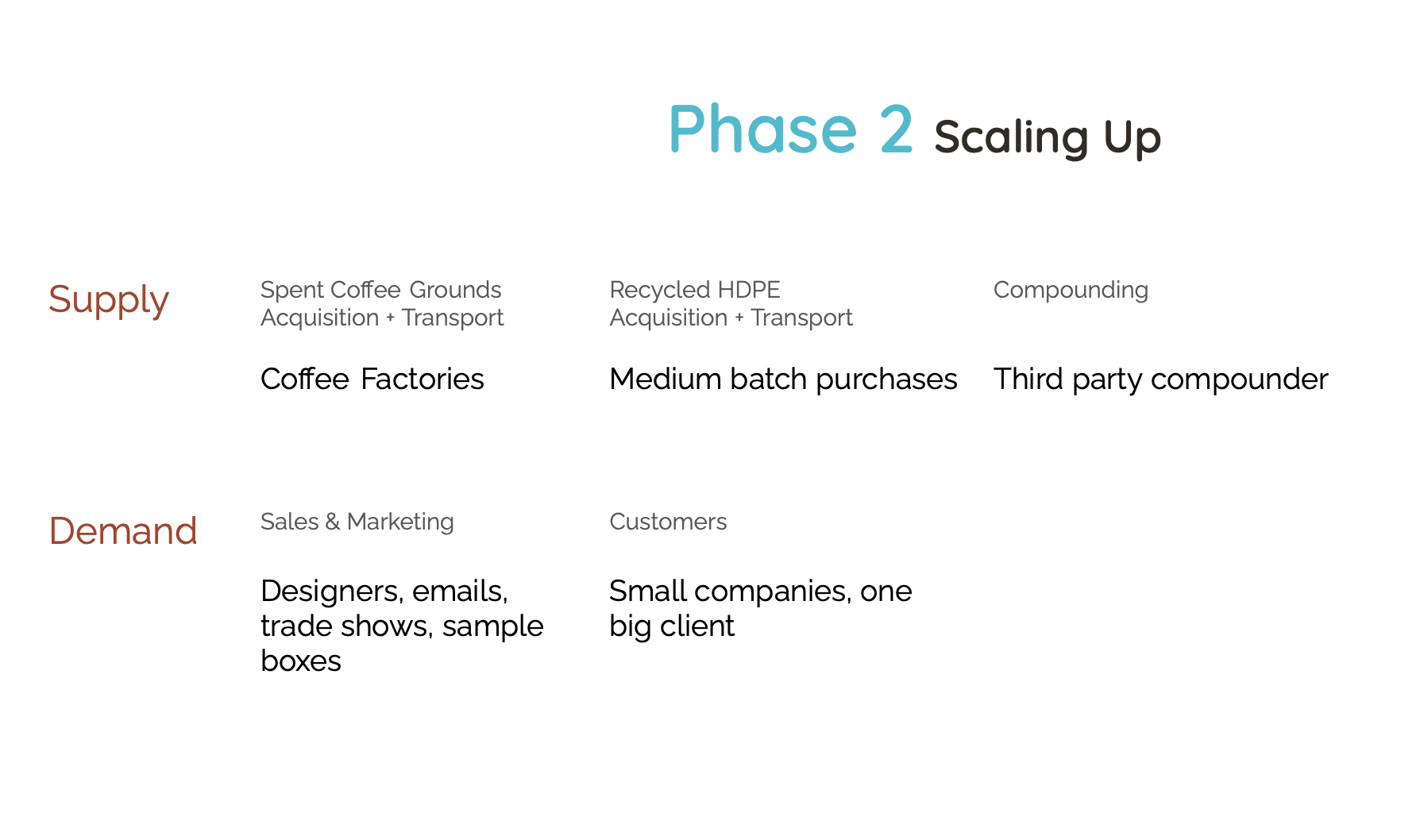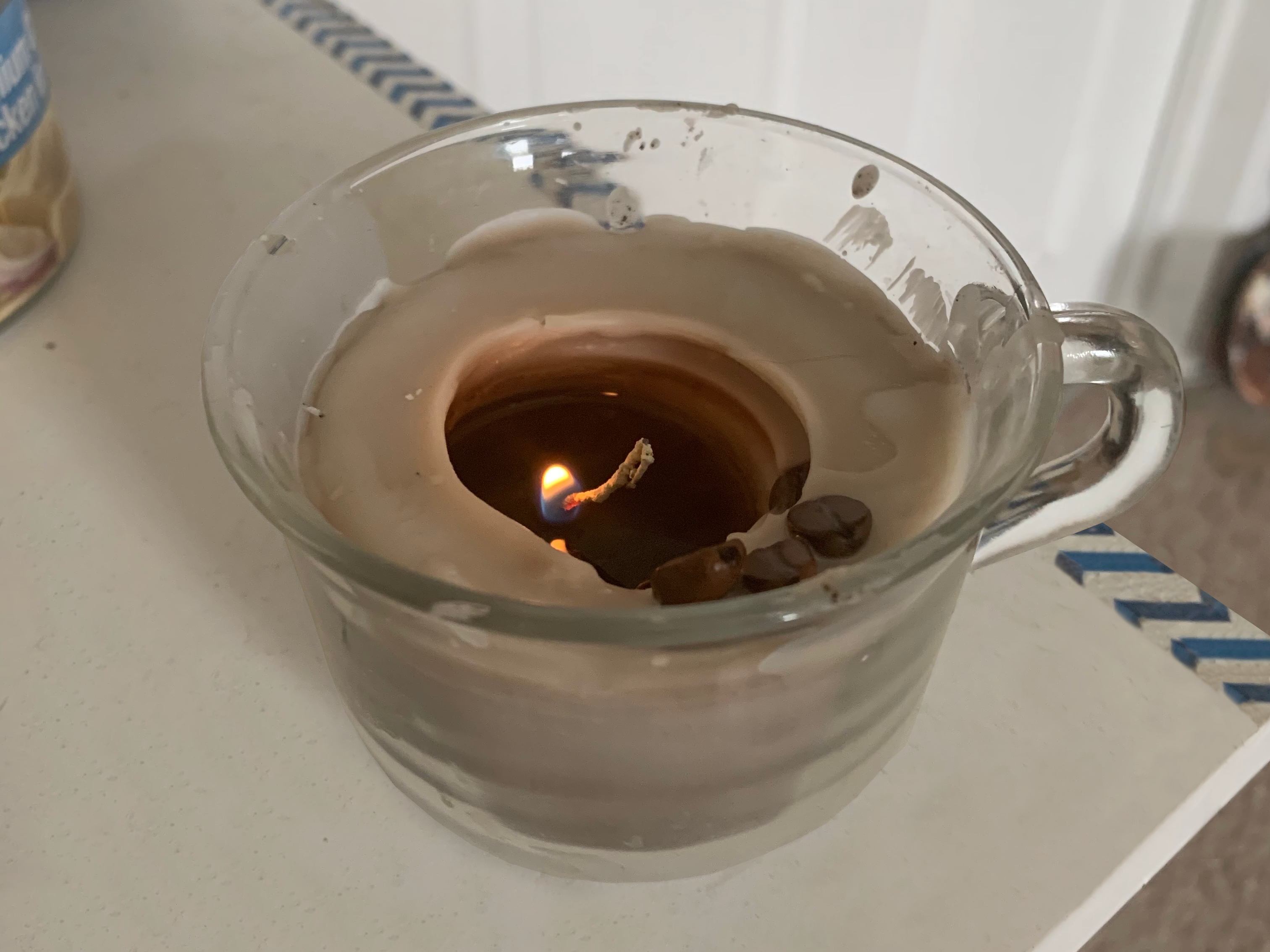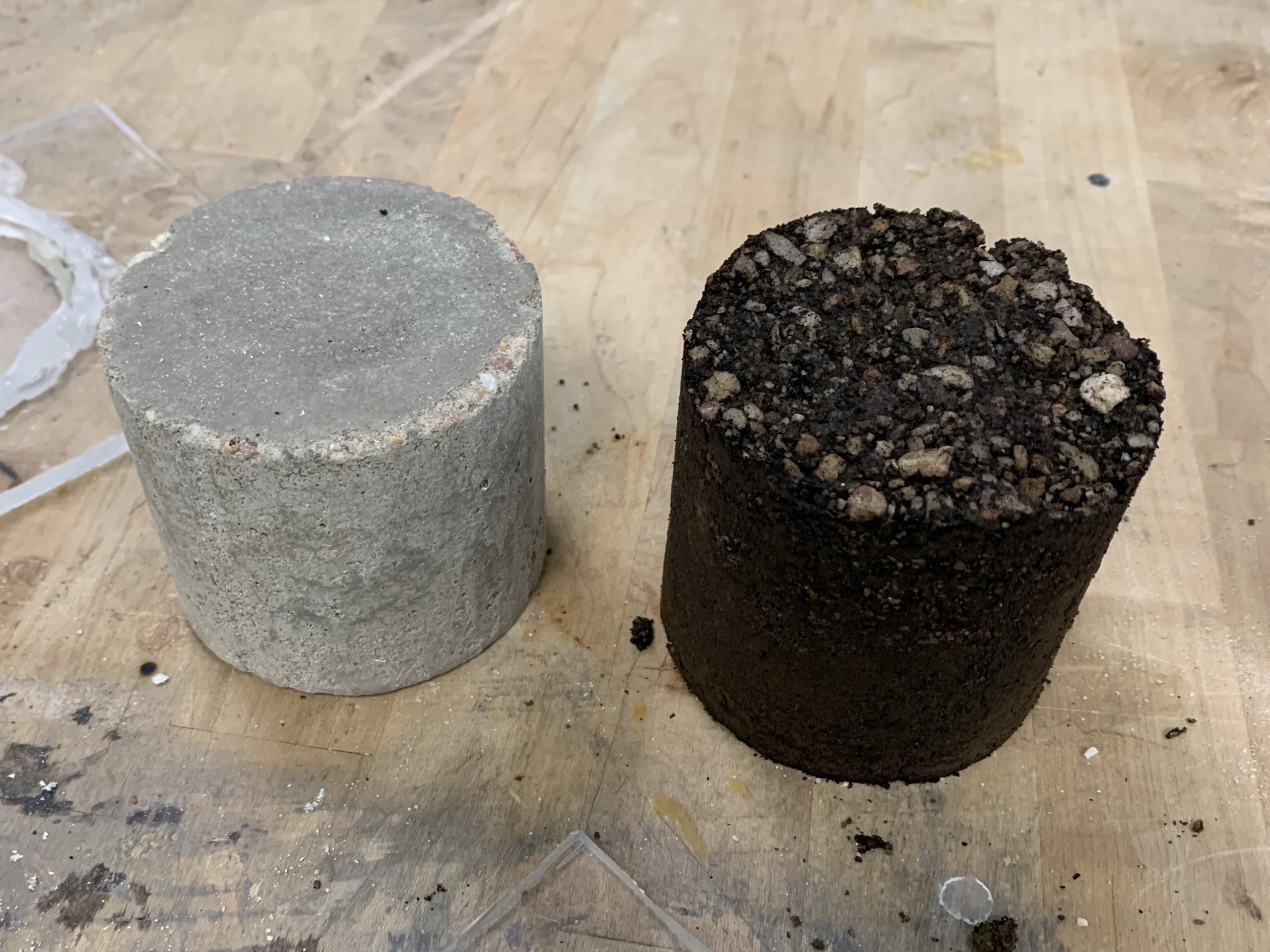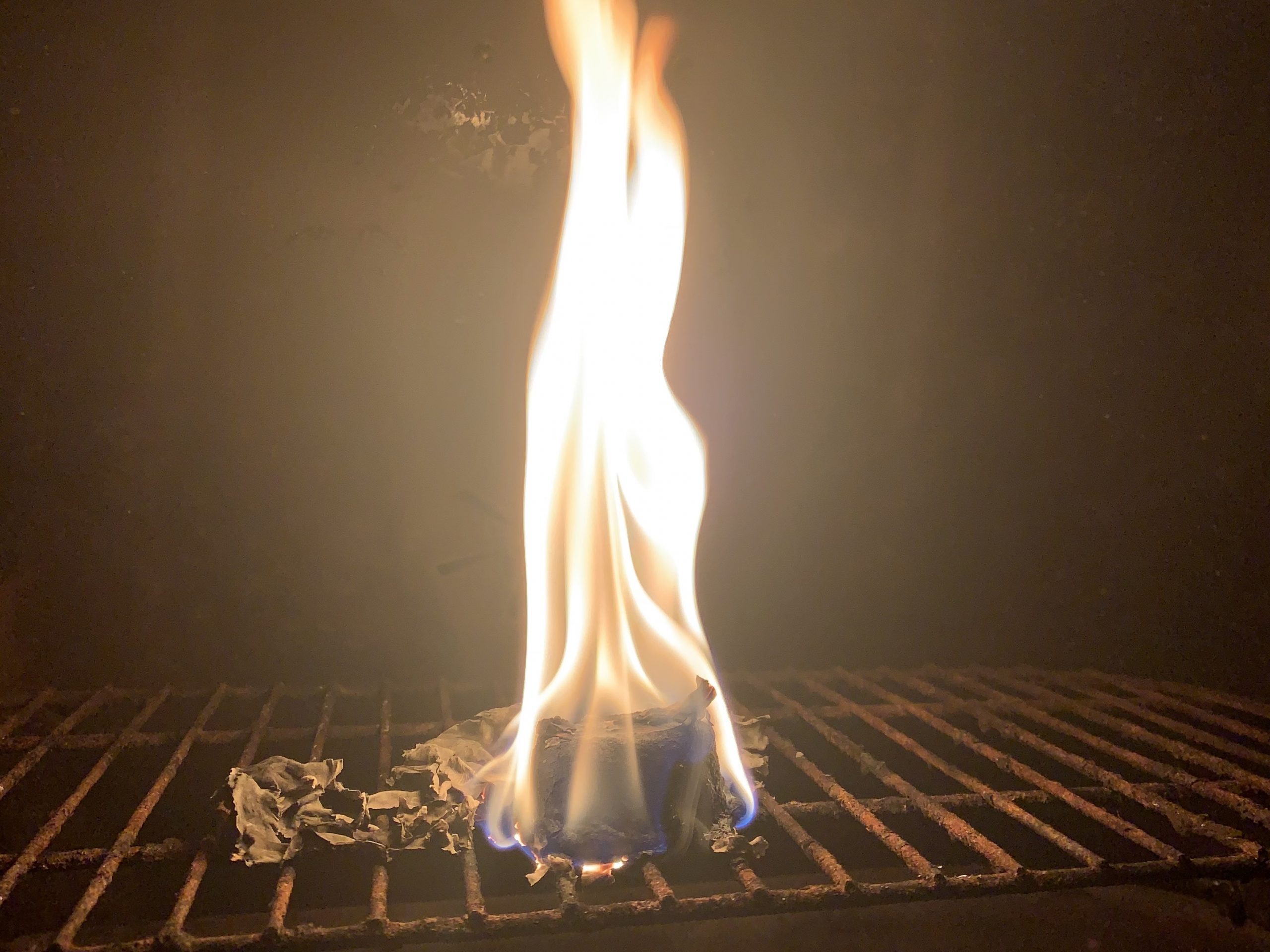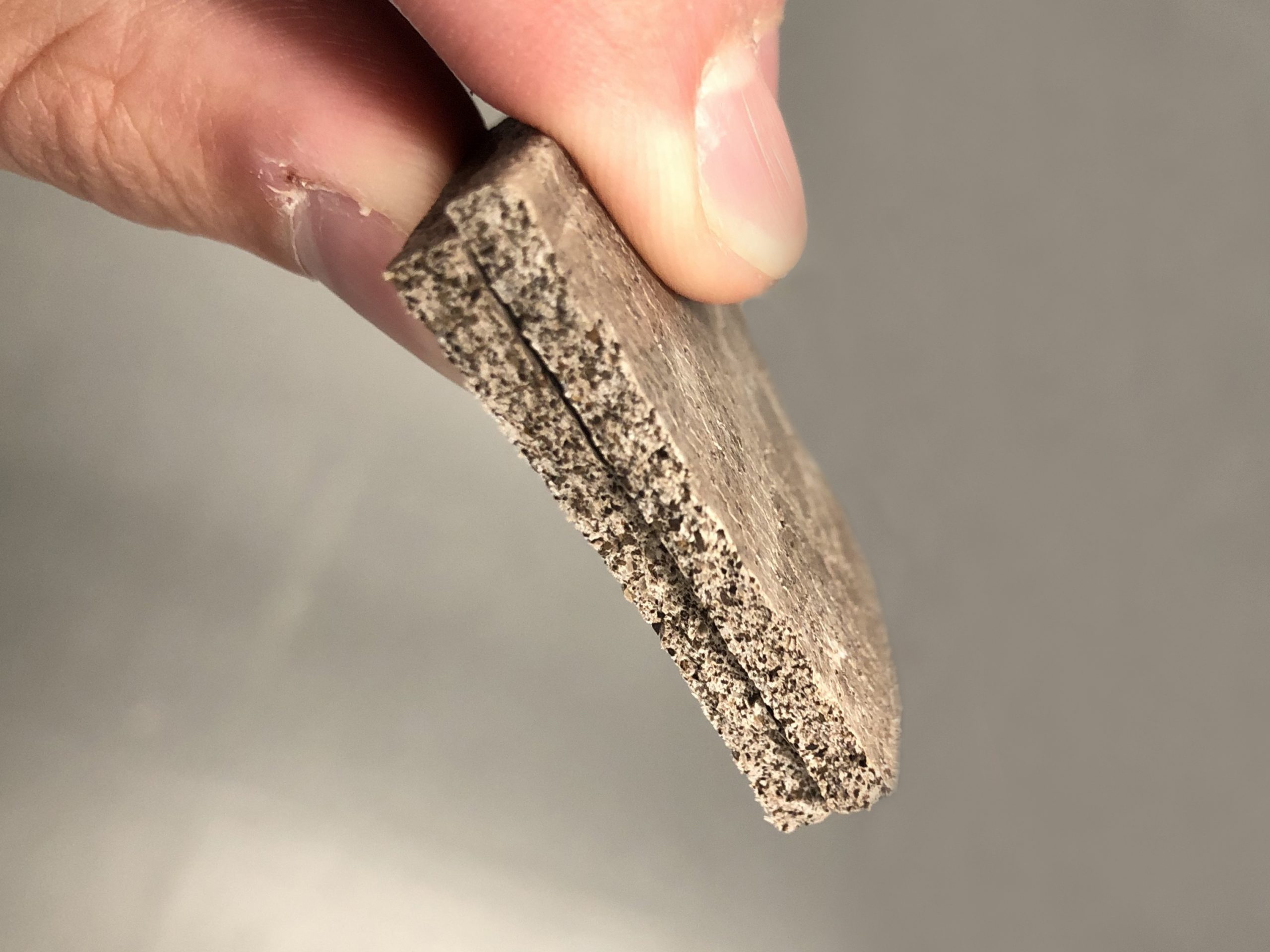COFFEA
Graduate Capstone Project
Material development to close the loop on coffee shop waste

Timeline: September – May 2021 (9 months)
Focus: Material Development • Human Centered Design Research • Business Development
Fabrication Processes: Injection Molding • Compression Molding • Compounding
Collaborators: Armando Márquez and Ilana Teicher
Coffea is a composite material made from recycled HDPE and Spent Coffee Grounds to divert waste from landfills and displace use of first-use plastic. Coffea was developed to give a second life to two large waste sources
HOW IT WORKS
Everyone knows waste is a huge environmental problem. There are 3000 active landfills in the US and over 10,000 old or abandoned landfills. As environmentally conscious designers, we were really motivated by the scale of the problem, and by the idea that not all “waste” is unusable. We sought out to divert and reuse useful materials from the waste stream, drawing from the two biggest waste sectors – food and plastics.
Graph: Total Landfill Waste by Material, 2018

Coffea gives a second life to spent coffee grounds and HDPE (or high density polyethylene) in the form of a new composite material. Coffea, our material, can be used by designers, engineers, and manufacturers instead of virgin plastic in a variety of different applications.
Our product range currently consists of two coffee-plastic compounds: Coffea 20 (made up of 20% SCG and 80% HDPE) and Coffea 40 (40% SCG and 60% HDPE). It comes in a variety of colors based on the HDPE source, has a naturally marbled aesthetic, a faint smell of coffee, and a unique texture, all of which can be controlled by varying the composition of the material. Due to compounding, both materials have increased stiffness and decreased ductility when compared to virgin HDPE. Both materials are food safe, but not dishwasher safe.
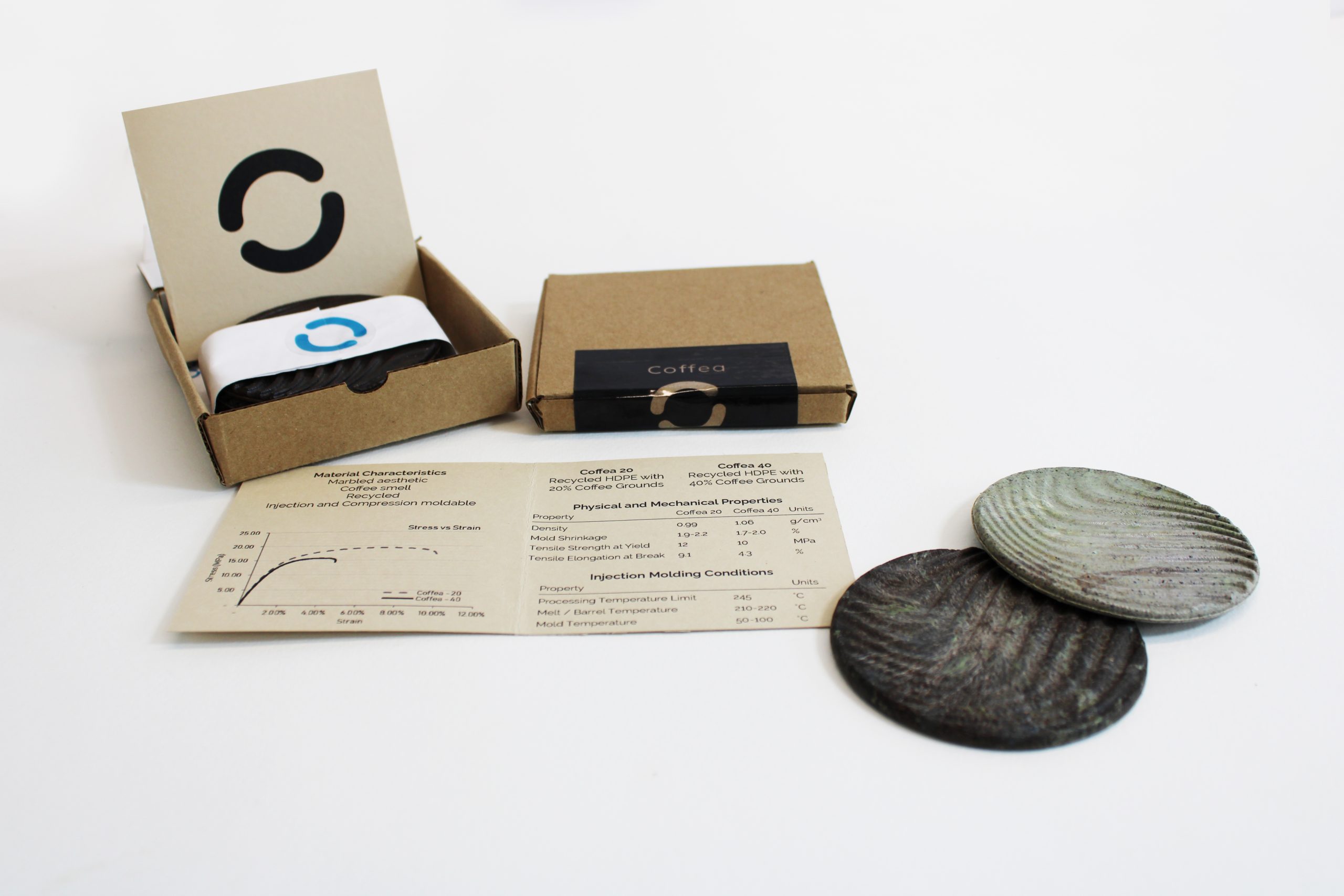
Coffea is a manufacturer of raw materials in the form of injection molding pellets. Our product is marketed towards engineers, designers, and manufacturers who want a greener alternative to standard petroleum-based plastics. We look to work with small and large companies in a range of industries, helping them to design and manufacture their products from a more eco-friendly material. We hope that Coffea makes its way into everyday life in the form of home goods, kitchen accessories, furniture, and more. In order to get our material in the hands of our clients, we manufacture the Coffea Sample Box, which includes a data sheet and samples of both Coffea 20 and Coffea 40, as seen to the left.
Coffea is a completely innovative product – our lateral competitors include other material manufacturers compounding fillers into plastic to make it more green, and other businesses working with spent coffee grounds to produce food additives, burnable energy sources, or 3D printing filament.
Our current marketing strategy is a 3 phase, 6 year plan, starting from collection at local coffee shops and partnerships with small design firms, and growing to in-house compounding from spent coffee grounds sourced from coffee factories. You can see our marketing strategy to the left.
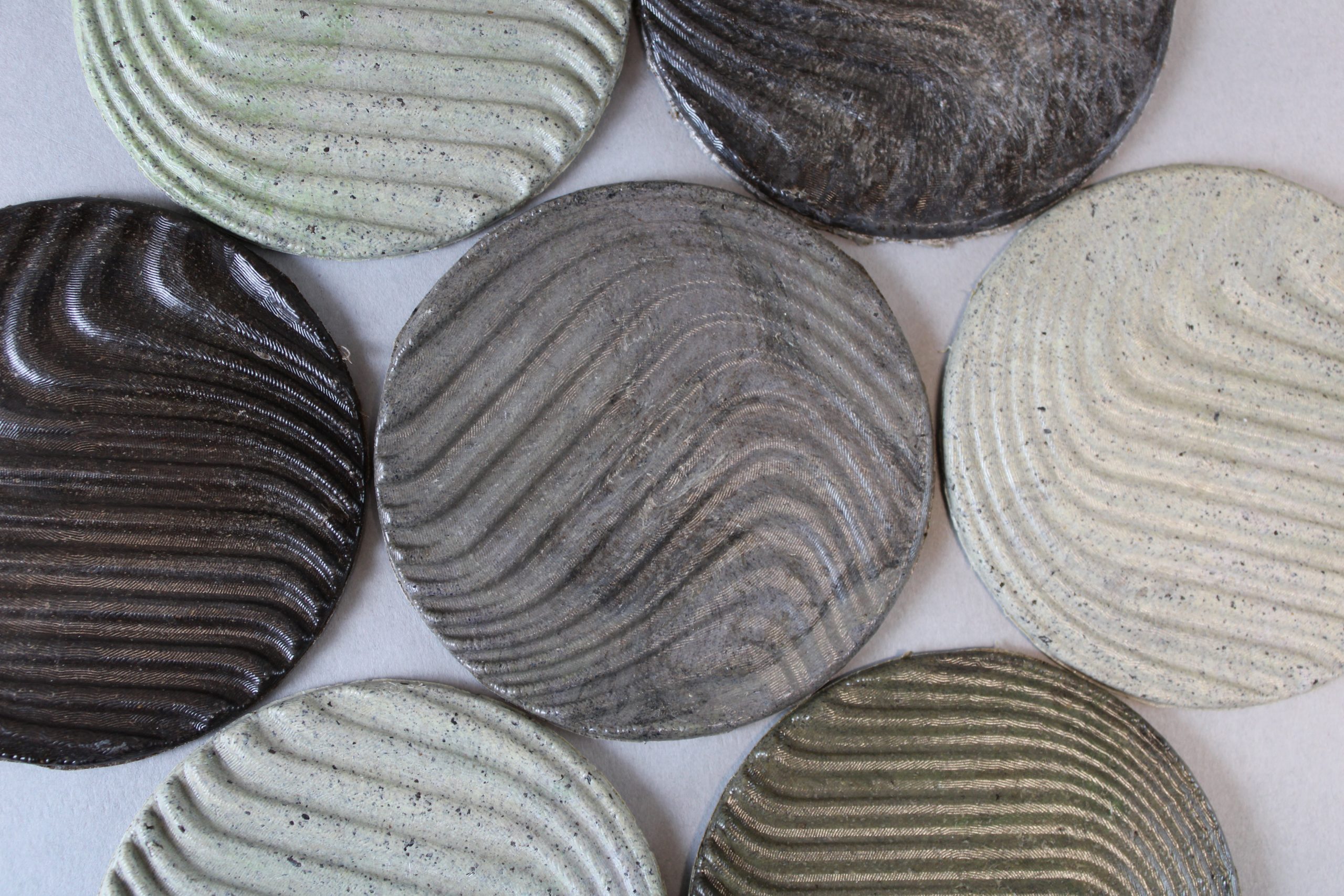
PROCESS
Spent Coffee Grounds are the wet grounds that are remaining after a cup of coffee is made. Americans drink about 400 million cups of coffee each day. All of this coffee consumption produces waste in the form of spent coffee grounds – around 1.6 million metric tons every year in the US. When thrown into the landfill, these grounds don’t just add to the global trash issue; they also produce greenhouse gases when they decompose under anaerobic conditions. These emissions are equivalent to the emissions of 2.4 M cars in a year.
While searching for the perfect recipe for Coffea, we ran dozens of coffee ground experiments. We thought critically about the material properties of Spent Coffee Grounds (form, color, scent, etc.) and studied how we could best take advantage of those properties. We conducted 21 experiments and explored 43 distinct directions for how spent coffee grounds can be reused.
We spoke to bio-materials experts, interviewed coffee roasters, and worked with baristas to understand how each of our experiments might be put into practice. This user research was critical to our solution – we learned so much every step of the way, even as we collected wet spent coffee grounds from a local coffee shop and tried to dry them out in our ovens (only had to call the fire department twice).

Ultimately, we determined that creating a plastic composite 1) diverts the most waste, and 2) will impact the most people. As an added bonus, it will prevent new plastic from being made. 400 M tons of plastic are produced each year, and yet only 8.7% of that is recycled. Creating a composite will help displace some of the petroleum-based polymers that are damaging our environment and prevent the emission of at least part of the GHG’s that are associated with the production of new plastic.
Once we settled on developing a plastic composite, we sourced recycled plastics and used a panini press to melt and compound spent coffee grounds into the plastic. We compression molded identical samples of each compound, as seen to the left.
REFLECTION
As Coffea takes hold in the market, it’s important to look back to where we started – displacing material from the landfills.
We acknowledge that even when selling thousands of tons of Coffea material, we will still be making a very small dent in the waste crisis. Giving a second life to less than 1 percent of plastic and coffee waste may not seem like a very big deal. However, we stand by the fact that any small impact we might have is important in changing the way we interact with plastic and think about the waste we create.
